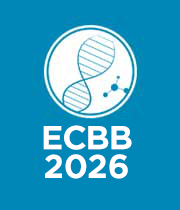Title: Sequencing analysis of pyelonephritis-associated pili Gene of uro-pathogenic escherichia coli isolated from iraqi patients from Baghdad
Abstract:
Pyelonephritis-associated pili (Pap) fimbria considered as the main adhesive virulence factor that enable Escherichia coli(E. coli) to colonize in the urinary tract and resist the avoiding by the flow of urine. DNA adenine methyl-transferase gene (Dam) have a role in regulation of pap E expression and in bacterial DNA repair system and it could be targeted by antibiotics. Sixty Four isolates of E. coli from urine specimens were obtained from hospitalized and outpatients suffering from signs and symptoms of urinary tract infections (UTI). These isolates were identified molecularly as uropathic E. coli (UPEC) by detection of pap E using conventional PCR. Partial sequencing of pap E was done to study variation among isolates according this gene and its role in susceptibility to antibiotic. Also, Dam was detected using conventional PCR. Detection of papE in E. coli strains revealed that 26/64(42.6%) were considered as UPEC. Analysis of nucleotide sequence changes from partial sequencing tree of pap E showed that there were three clads and UPEC included in clade B displayed the most nucleotide sequence changes. Dam was detected in 11/64 (17.1%) E. coli isolates. The study of multi-drug resistance(MDR) risk in association with the presence of pap E and Dam in UPEC revealed that Dam could be considered as etiological factored to developing MDR. In conclusion, Dam should be taken in consideration as one mechanism of MDR development in UPEC.
Audience Take Away Notes :
- It is not long enough to Identification only the presence of bacteria in human specimens to consider it as pathogens, especially these bacteria which could be act as human microbiota and pathogens but it needs for identify the main virulence factor(s) that enable the bacteria to cause disease
- Identification of main colonization factors of bacteria isolated from specific human tissue sit reflect the degree of bacterial pathogenicity.
- Searching for new antibiotics targets such as bacterial DNA methylation patterns will improve in solving antibiotic resistance, especially in bacterial with high tendency to antibiotic resistance.



